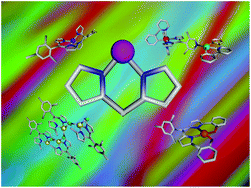Luminescent dipyrrin based metal complexes
Abstract
While they may have been overshadowed by the brightness of their BODIPY analogues,

* Corresponding authors
a
Laboratoire de Tectonique Moléculaire, UMR CNRS 7140, Université de Strasbourg, Strasbourg, France
E-mail:
sbaudron@unistra.fr
Fax: +33 9368851325
Tel: +33 368851261
While they may have been overshadowed by the brightness of their BODIPY analogues,

 Please wait while we load your content...
Something went wrong. Try again?
Please wait while we load your content...
Something went wrong. Try again?
S. A. Baudron, Dalton Trans., 2013, 42, 7498 DOI: 10.1039/C3DT50493J
To request permission to reproduce material from this article, please go to the Copyright Clearance Center request page.
If you are an author contributing to an RSC publication, you do not need to request permission provided correct acknowledgement is given.
If you are the author of this article, you do not need to request permission to reproduce figures and diagrams provided correct acknowledgement is given. If you want to reproduce the whole article in a third-party publication (excluding your thesis/dissertation for which permission is not required) please go to the Copyright Clearance Center request page.
Read more about how to correctly acknowledge RSC content.
 Fetching data from CrossRef.
Fetching data from CrossRef.
This may take some time to load.
Loading related content
